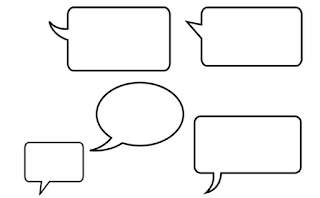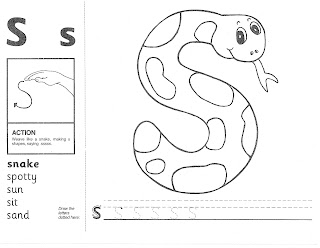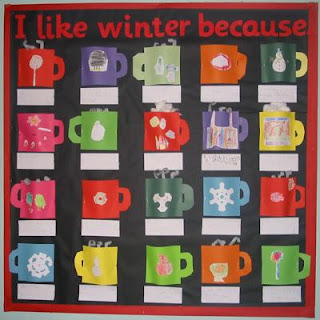Here it is all in one place, poems, songs, writing, art we did in grade 1 around the theme of winter and Christmas (with some 5 senses and seasons outcomes in there). Winter unit materials are listed here along with several 'work on writing' options for students. Posted exemplars of completed writing projects and booklets are often helpful for students during independent writing time.
More resources are regularly collected and curated on my winter Pinterest Board.
More resources are regularly collected and curated on my winter Pinterest Board.
Winter visual dictionary (link includes both colour and black and white) for the unit, colour copies are laminated and available to students during writing. By the end of the year we have a bunch of them on all different themes. Especially helpful for reluctant writers or those who have difficulty transcribing from a word wall.
Black and white version glued into agendas or journals for writing (good communication tool for parents to show what students are learning).

"L'hiver" class collaborative books. In kindergarten students simply add the names of their friends. Students are also encouraged to label items in their picture.
In grade 1 students add the names of their friends and what they like to do in the snow. Students learn to add "ent" to the end of verbs when more than one person is doing the action; jouent, glissent, lancent des boules, roulent.
We use this sentence structure in our daily journals too.
Students are encouraged to label their drawings as in K and in grade 1 enjoy adding speech bubbles to the characters in their picture.
Speech bubbles to cut and add to pictures, encourages students to write, add to pictures, small manageable writing areas.
Song to the tune of "Sur le pont", reviews some of the sound blends we are learning in December and January.
Glue the sound and pictures in the right place, complete the sentence, draw a picture. Make your own verse to the song?
As we listen and later sing along students find and circle sound blends we know, ie: 'on', 'an', 'eu', 'oi', 'ette', 'eau', 'en', 'ou'.
We learn the sounds using the Jolie phonique images and hand actions. This slide share gives you an overview of the Jolly Phonics program.
Example of actions and images for Jolly phonics (available in French from Amazon).
As a follow up to the song students write about what they, taste, see, hear in winter (maybe they could sip hot chocolate while they write?).
Un bon chocolat chaud mini book, "En hiver je goûte, en hiver je vois . . . " (work on writing centre).
This could also follow learning the Charlotte Diamond song "Un bon chocolat chaud". I haven't found a subtitled version yet so I opted for the song above by Les Enfantastiques.
Use a sheet of construction paper to make a mug booklet.
I first saw the idea here at the Amazing preschool Activities blog.
Un bon chocolat chaud mini book, "En hiver je goûte, en hiver je vois . . . " (work on writing centre).
This could also follow learning the Charlotte Diamond song "Un bon chocolat chaud". I haven't found a subtitled version yet so I opted for the song above by Les Enfantastiques.
Use a sheet of construction paper to make a mug booklet.
I first saw the idea here at the Amazing preschool Activities blog.
Song "Un bon chocolat chaud" by Carmen Campagne (but not subtitled!).
L'hiver collage - art project.
We all started with many shades of blue paper for the base, a road and dotted line. Then we built cities from scraps, newspaper, foil, and finally plastic snow bits. See the post here.
This idea came from a great art site Deep Space Sparkle.
"Il neige" poem to accompany our collages (merci Mme Hecker!). Use actions to help students learn and memorize the poem. Start to sing it whenever you're getting ready to go outside.
The poem is recorded below, not sure I have it quite right and will have to recruit come grade 2 students who recall the song for a recording!
Completed version and fill in the missing words.

We all started with many shades of blue paper for the base, a road and dotted line. Then we built cities from scraps, newspaper, foil, and finally plastic snow bits. See the post here.
This idea came from a great art site Deep Space Sparkle.
"Il neige" poem to accompany our collages (merci Mme Hecker!). Use actions to help students learn and memorize the poem. Start to sing it whenever you're getting ready to go outside.
The poem is recorded below, not sure I have it quite right and will have to recruit come grade 2 students who recall the song for a recording!
Completed version and fill in the missing words.

Les cinq sens à noël mini book (work on writing centre).
 Livre des cinq sens à complèter et à ajouter à nos panier de livres.
Livre des cinq sens à complèter et à ajouter à nos panier de livres.How to eat a gingerbread man mini book (work on writing centre - Jan./Feb.). Original post is here.
"Dans mas boule à neige" mini book, print on legal sized paper (work on writing centre - Jan./Feb.).
See the original post here (and many other variations on pinterest!).
This booklet includes a vocabulary bank of words.
Read the story Snowballs by Lois Ehlert. Here is a site with some ideas for French winter titles. Her books are beautiful so I'd read it even though it's in English.
Sing the song and learn the poem "Rouli, roula". I recorded it just so you can get the tune, it sounds pretty silly!
Photocopy budgets are always shrinking, perhaps many of these books and ideas can be inspiration for something of the students own creation. I find that in grade 1 a blank page can be intimidating for students, hopefully these can at least be a place to start when students are working on writing during The Daily Five.
Other winter themed posts on this blog include, The Mitten unit (based on book by Jan Brett), winter mitten math journal, gingerbread man math journal.
We made toilet roll santa's to go with the song.
See the Hedgehog blog here for instructions.
Repetitive song the young students love about Santa getting dressed (Quand le Père Noël vient me visiter). Printable song book is here.
I always forget the order of the song, Santa gets dressed from the feet up!
Students can write their own version of the song using this dictionary of winter activities:
Quand Madame Wiebe
va patiner
elle faut bien, s'habiller.
Elle porte des patins blancs.
Avec, un foulard rose.
Video of the song with lyrics:














































